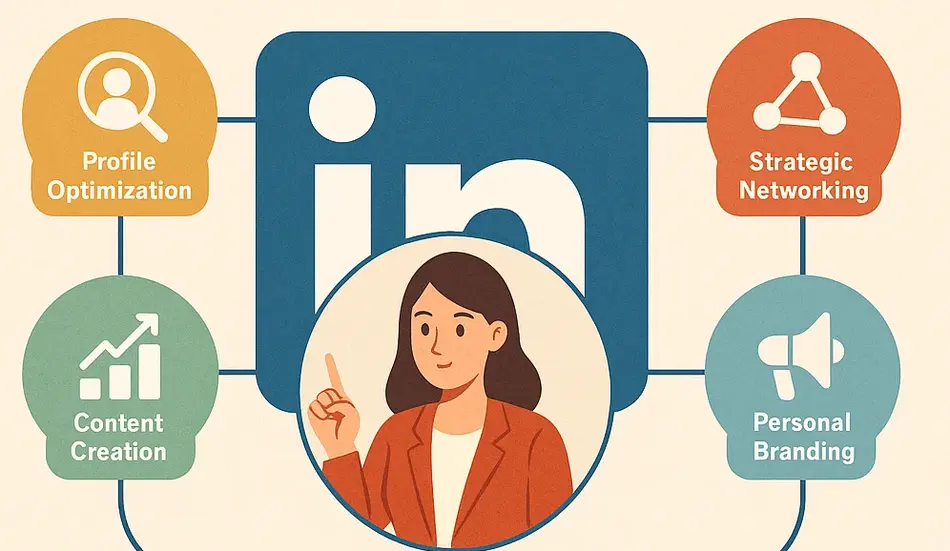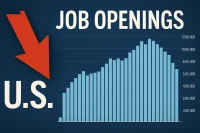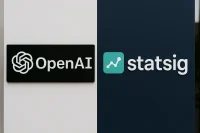LinkedIn has transformed from a static résumé host into a dynamic, AI-powered job engine. With over 1 billion members and evolving recruiter tools, mastering LinkedIn in 2025 can open doors that never existed before. It’s more than a profile—it’s a platform where opportunities find you, conversations lead to hires, and your digital brand becomes a powerful career asset.
This comprehensive guide will help job seekers—from students and recent graduates to career changers and professionals—build, grow, and convert LinkedIn activity into real job leads.
Why LinkedIn Matters More in 2025
1. Recruiters Search Here First
According to a 2025 Global Talent Trends report, over 95% of recruiters start their candidate search on LinkedIn. Even before you apply, a recruiter might already have your profile in a talent pool. If your presence isn’t optimized, you’re invisible to them.
2. LinkedIn’s AI Matches You to Roles
LinkedIn’s algorithm now reads your:
- Skills
- Experience
- Location preferences
- Content interactions
It then matches you to relevant roles—even passive ones—and recommends your profile to recruiters. Your engagement on the platform directly affects your job visibility score.
Step 1: Optimize Your Profile to Attract Jobs
Think of your LinkedIn profile as your personal sales page. The more compelling and tailored it is, the more likely recruiters will contact you.
Headline: Keywords, Not Just Titles
Bad: “Student looking for work”
Good: “Aspiring Data Analyst | Python | SQL | Tableau | Seeking Entry-Level Analytics Role”
📊 Jumpstart Your Career in Data Analytics
Are you an aspiring Data Analyst with skills in Python, SQL, and Tableau?
Explore entry-level analytics opportunities that will help you build real-world experience, sharpen your technical toolkit, and launch a rewarding data-driven career.
WhatJobs makes it easy to find junior roles in analytics, insights, and BI—perfect for recent grads and career switchers.
👉 Browse entry-level data analyst jobs now and start turning data into decisions.Use job-relevant keywords and tools to ensure you appear in search results.
Photo and Banner: First Impressions Count
- Use a high-resolution photo with a clean background and professional attire
- Customize your banner image with industry branding (e.g., code, city skyline, classroom)
About Section: Your Career Narrative
In 3–4 short paragraphs:
- Lead with your mission or passion
- Highlight key achievements and tools used
- State what you’re looking for
Example:
I’m a marketing analyst with 2+ years of experience turning data into actionable insights. From campaign tracking to customer segmentation, I thrive at the intersection of numbers and narratives. Open to new roles in data strategy or performance marketing.
Experience: Bullet Points with Results
Use this format:
- Task or project
- Tools used
- Tangible results
Example: “Built email workflows in HubSpot, boosting lead conversion by 22%.”
Skills: Fill All 50 Slots
Match your skills to those listed in roles you’re applying for. Focus on:
- Technical tools (Python, SQL, Adobe, Salesforce)
- Industry terms (UX design, content strategy, customer journey mapping)
- Soft skills (collaboration, project management)
Featured Section: Showcase Your Work
Upload PDFs, media kits, blog posts, or projects to build instant credibility. Think of it as your portfolio.
Step 2: Grow Your Network Intentionally
Target Your Connections
Prioritize:
- Alumni
- People in your target industry
- Hiring managers and recruiters
- Speakers and influencers in your field
Always include a personal message:
Hi Alex, I enjoyed your post about ethical AI hiring. I’m transitioning into tech policy and would love to follow your work. Thanks for connecting!
Follow Industry Hashtags
Click “Follow” on hashtags like:
- #remotework
- #marketingjobs
- #hiringdevelopers
These feed your home page with relevant posts—and help you join conversations.

Use the Alumni Tool
Search for your school’s alumni by:
- Location
- Job title
- Employer
Reach out with common ground. Example:
Hi Taylor, fellow Temple alum here! I noticed you’re at Accenture—I’d love to learn more about how you got there.
Step 3: Be Visible to Recruiters—Without Being Annoying
Turn on “Open to Work”
Set your preferences to:
- Job titles you want
- Remote/hybrid/in-office
- Industries
- Start date availability
You can choose to show the green “Open to Work” banner or limit visibility to recruiters only.
Update Your Profile Regularly
Every edit (new skill, course, post) boosts your ranking in LinkedIn’s algorithm. Weekly tweaks can keep you top-of-mind.
Step 4: Engage with Content to Build Authority
Post Once Per Week
Examples:
- A career milestone or certification
- An article with your opinion
- A recap of a webinar or industry event
- A “job hunting update” post
Pro tip: Posts that end with a question get more engagement.
Comment Thoughtfully
Don’t just “like” posts—comment. Example:
Great insights on remote collaboration, John. I’ve found async tools like Notion really help balance time zones.
People will check your profile after smart comments—especially if you comment on posts from influential voices or hiring managers.
Use Creator Mode (Optional)
Turning on Creator Mode:
- Adds hashtags to your profile
- Allows you to feature content
- Encourages you to grow followers vs. connections
Best for freelancers, consultants, or job seekers with portfolios.
Step 5: Job Search Tactics That Work
Use Advanced Search
Under the Jobs tab:
- Filter by date (past 24 hours)
- Choose “remote,” “hybrid,” or location
- Select experience level
Then save searches to get alerts.
Apply Strategically
Don’t shotgun your resume—tailor it. Look for:
- Mutual connections
- Shared company values
- Skill match percentage
If the posting shows “10 applicants or fewer,” apply quickly. Early applicants often get reviewed first.
Step 6: Follow Up and Build Relationships
After Applying
Send a message to the hiring manager or recruiter:
Hi Jordan, I just applied to the UX Designer role at Figma. I’m excited by your team’s work and would love to connect. Happy to share more if helpful!
Even if they don’t reply, you’ll often be noticed.
Request Informational Interviews
Frame it around curiosity—not desperation.
Message:
Hi Carla, I’m exploring career paths in B2B sales and admire your journey. Would you be open to a 15-minute chat next week? I’d love your insights.
Keep it casual. No resume required unless they ask.
Step 7: Build Social Proof
Endorse Others
When you endorse people, many endorse you back. Focus on:
- Skills you’ve witnessed
- Classmates or teammates
Ask for Recommendations
Good ones say:
- What you worked on
- Your contributions
- Specific impact
Request from professors, colleagues, managers. Provide a suggested outline if they ask.
Bonus Tips for 2025
- Use AI Resume Review Tools on LinkedIn Premium to scan your fit for a job
- Follow companies you admire to get notified of new jobs and culture posts
- Join LinkedIn Audio Events or Webinars for insights and networking
- Respond to “I’m hiring” posts with a tailored comment and quick intro
FAQs
Q: How many connections should I have?
A: Aim for at least 300 to gain credibility. But quality > quantity. Engage with your network consistently.
Q: Should I post about job loss or unemployment?
A: Yes, if you’re comfortable. Frame it positively and include what you’re looking for. These posts often lead to unexpected leads.
Q: What time of day is best for posting?
A: Mornings (8–10 AM) midweek (Tuesday–Thursday) perform best for visibility.
Q: Does commenting really help?
A: Yes—commenting on the right post can triple your profile views and build industry visibility.
Final Thoughts
LinkedIn is no longer optional—it’s essential. Whether you’re an entry-level candidate or seasoned professional, leveraging LinkedIn effectively can open doors to new industries, opportunities, and networks.
In 2025, employers are no longer just asking for résumés—they’re scanning LinkedIn feeds, watching who you engage with, and evaluating your digital presence. So show up, speak up, and connect intentionally.
Because on LinkedIn, it’s not about who you know—it’s about who knows you.




